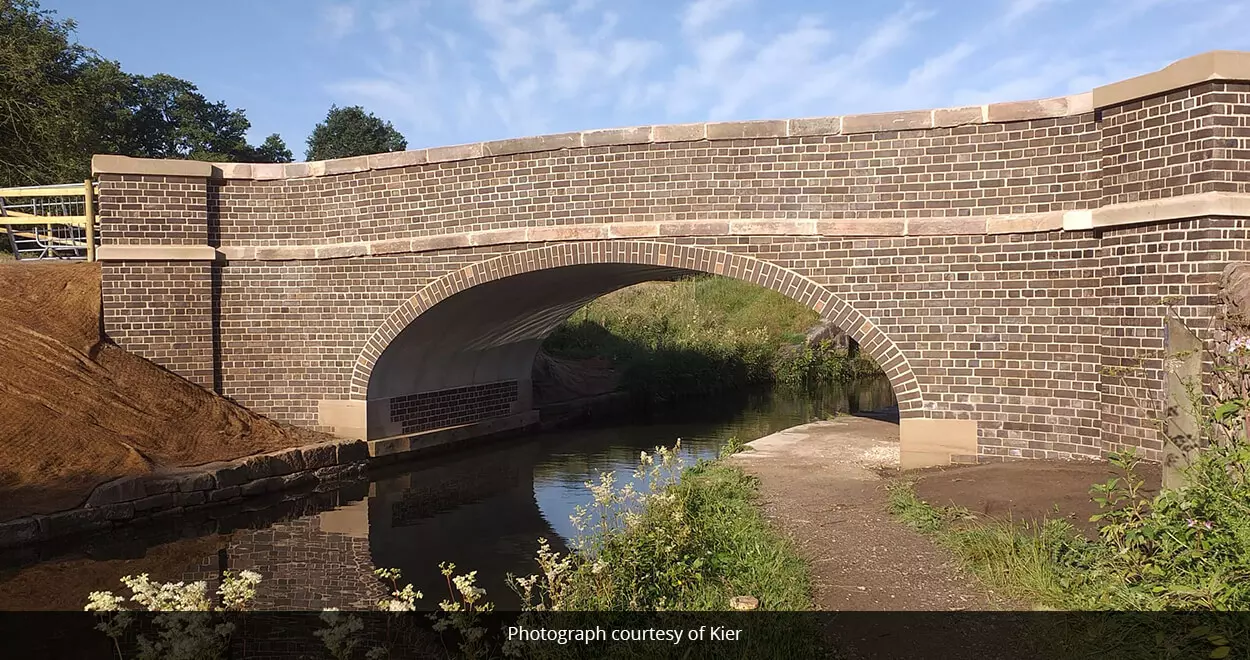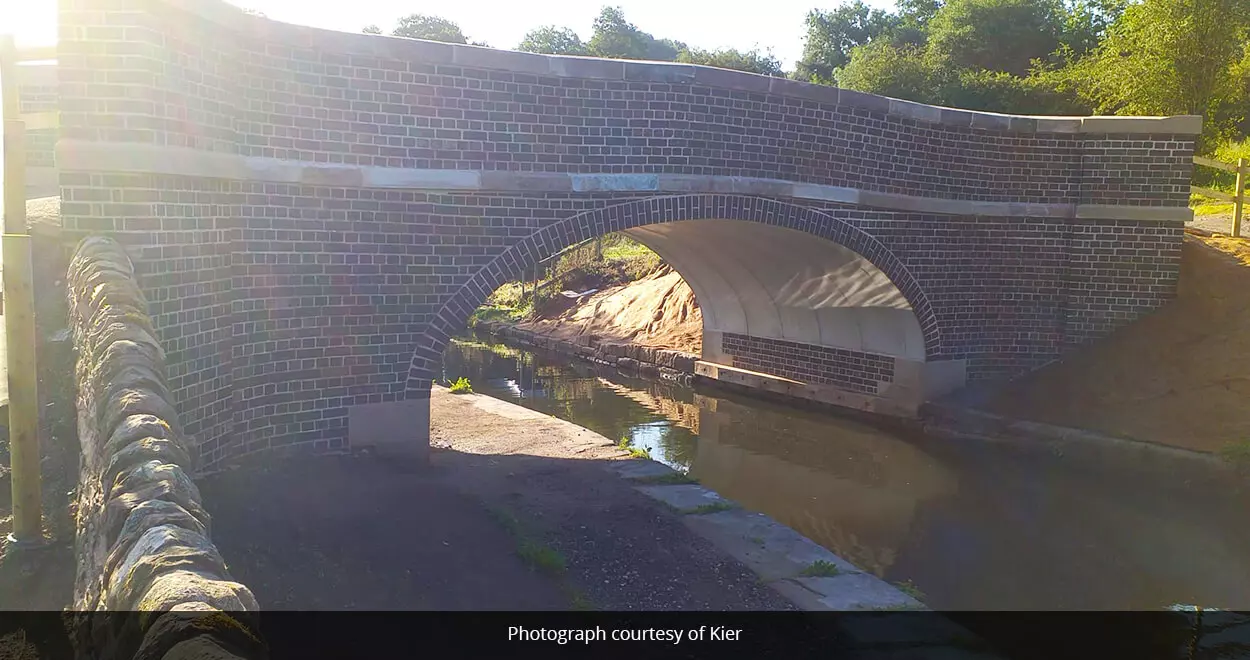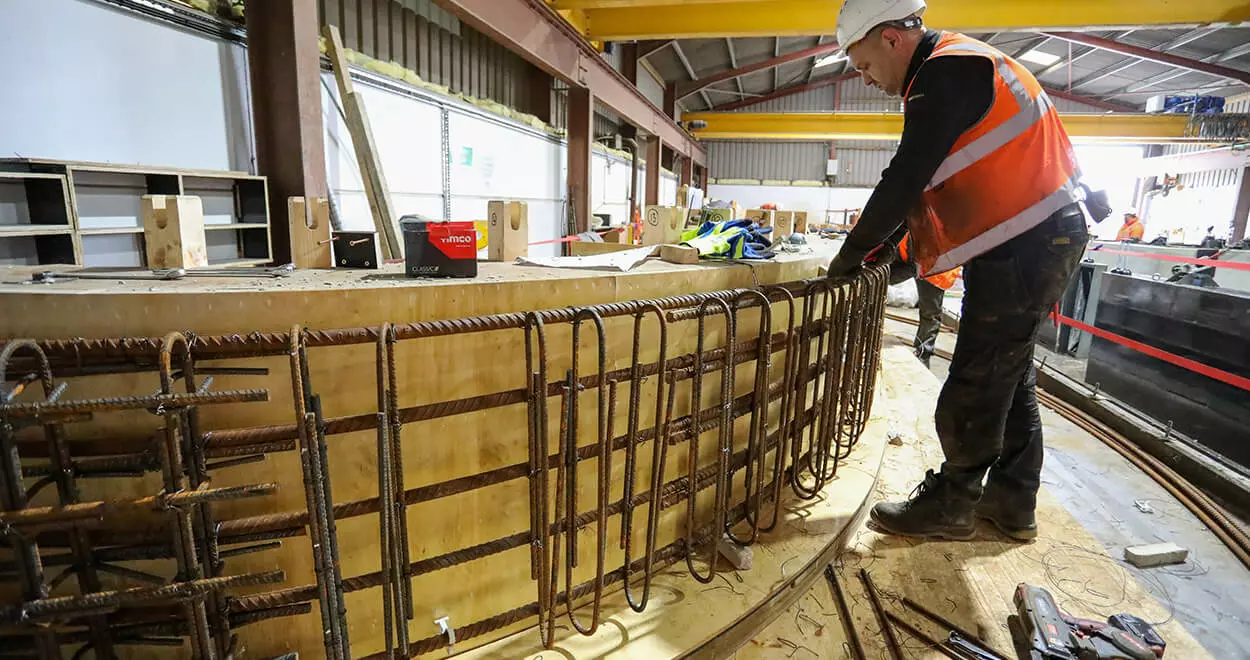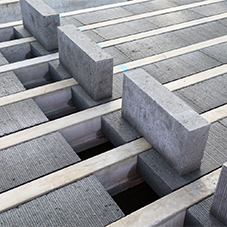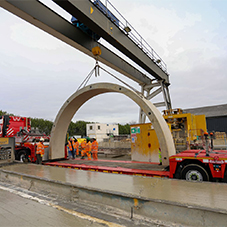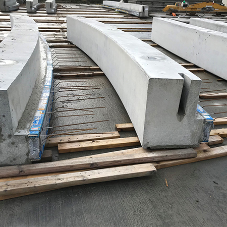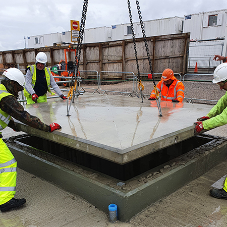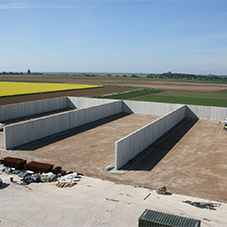The historic Grade II Listed bridge near Endon in Staffordshire was irreparably damaged in 2020 during the repair of Hazlehurst Bottom Lock.
Hazlehurst Lock Bridge (No 37) across the Caldon Canal is situated below Hazlehurst Bottom Lock. The canal runs from Stoke-on-Trent to Froghall covering a distance of 18 miles with 17 locks. It was opened in 1779 to transport limestone from the quarries at Cauldron, near Froghall. Hazlehurst Lock Bridge was built as an accommodation bridge, allowing farmers and landowners to access fields on either side of the canal.
It provides vehicle and pedestrian access, also allowing liveaboard boaters to reach their moorings on the canal.
When Hazlehurst Bottom Lock was being repaired, the canal was dewatered and pressure from behind the dam wall caused structural damage to the foundations of the bridge, which was located close by. The bridge subsequently had to be demolished for safety reasons.
Main contractor: Kier
Solution : precast concrete arched bridge sections
After consultation between Staffordshire Moorlands District Council, Historic England and the Canal and River Trust, it was agreed to reinstate the historic Grade II Listed bridge. The Canal and River Trust applied for Listed Building Consent to rebuild the structure under the condition that the new bridge would match wherever possible its original form, scale and character.
Poundfield Precast were selected by Kier to supply the precast concrete arched bridge sections, which were integral to the restoration.
Originally the bridge was constructed with blue brick masonry with a 175mm sandstone string course. We supplied the project with 7 precast concrete arched bridge sections, each nearly 8 metres long and weighing around 4.24 tonnes. These were cast off-site at our facility at Suffolk and transported around 200 miles to Staffordshire, where they were installed, along with many of the original stone masonry copings to recreate an authentic representation of the original bridge.
The arches were made using a 40% GGBS (Ground Granulated Blast-furnace Slag) mix along with radial steel rebar. The use of GGBS resulted in carbon savings compared with using a mix consisting of OPC (Ordinary Portland Cement).
Precast concrete is the ideal choice for constructing bridges for several reasons. Known for its strength and durability, it can provide the structural support to carry significant weight, such as the transportation of vehicles, farm machinery and equipment. Concrete can also withstand harsh weather conditions and will be able to cope with the damp environment when bridging the canal.
Precise calculations are required for load bearing structures and the process of manufacturing precast concrete bridge sections with reusable moulds, in a controlled environment, will ensure consistent dimensions, strength and finish that will help to safeguard the bridge’s future for many years.
Hazlehurst Lock Bridge restoration, Staffordshire
| T | (01449) 723150 |
|---|---|
| E | enquiries@poundfield.com |
| W | Visit Poundfield Precast's website |
| The Grove, Creeting St Peter, Ipswich, IP6 8QG |

